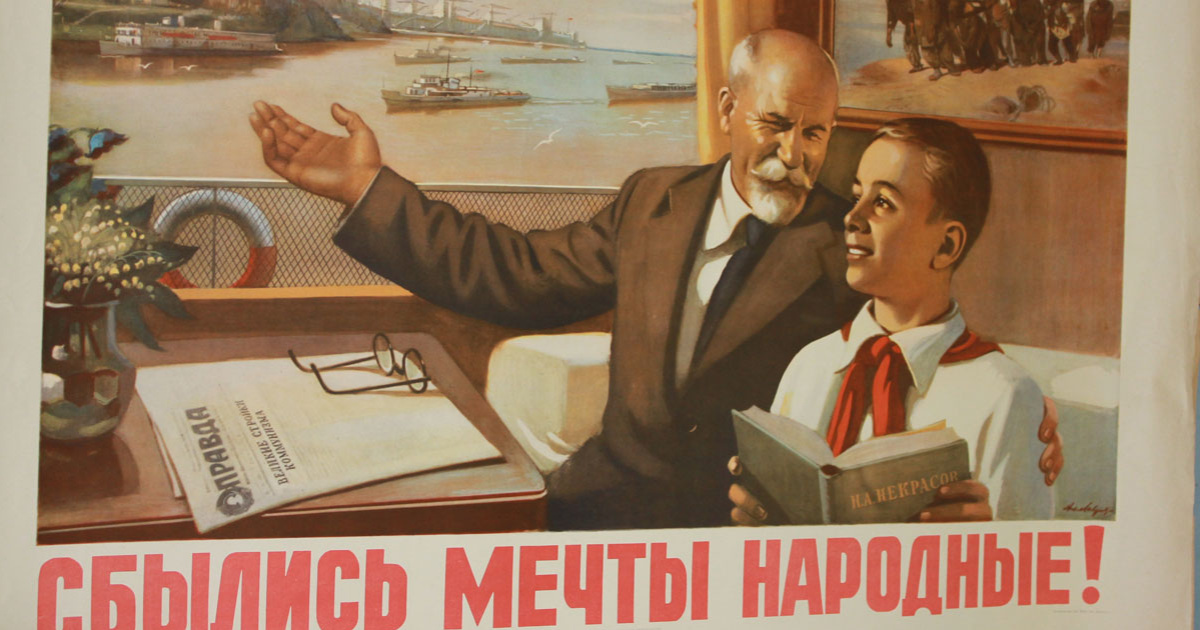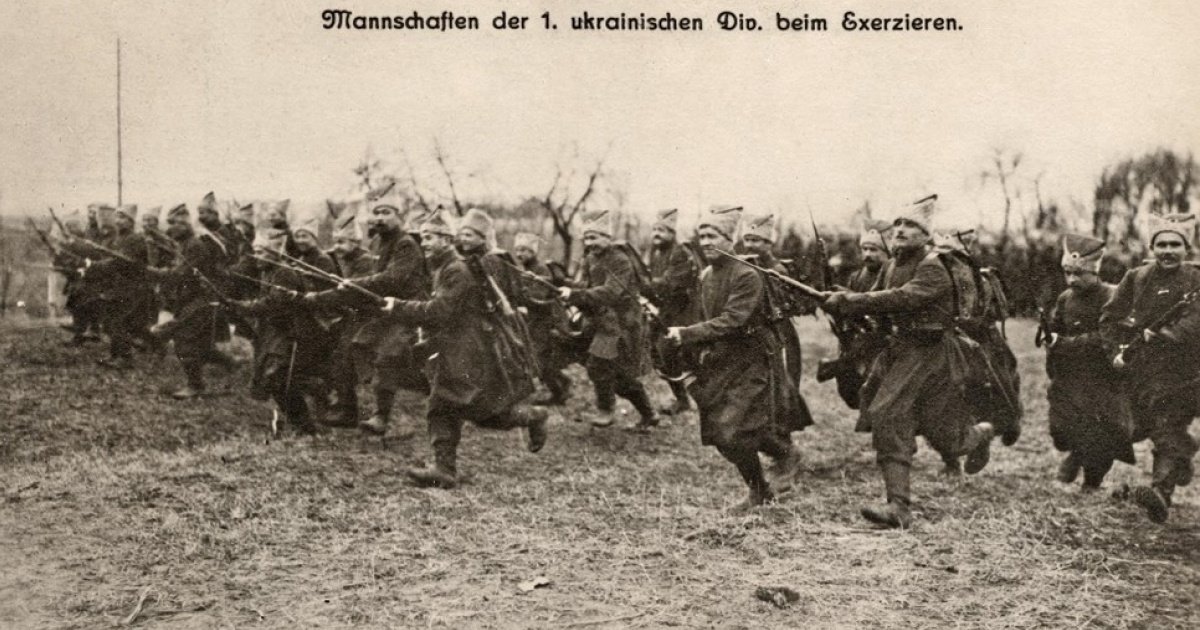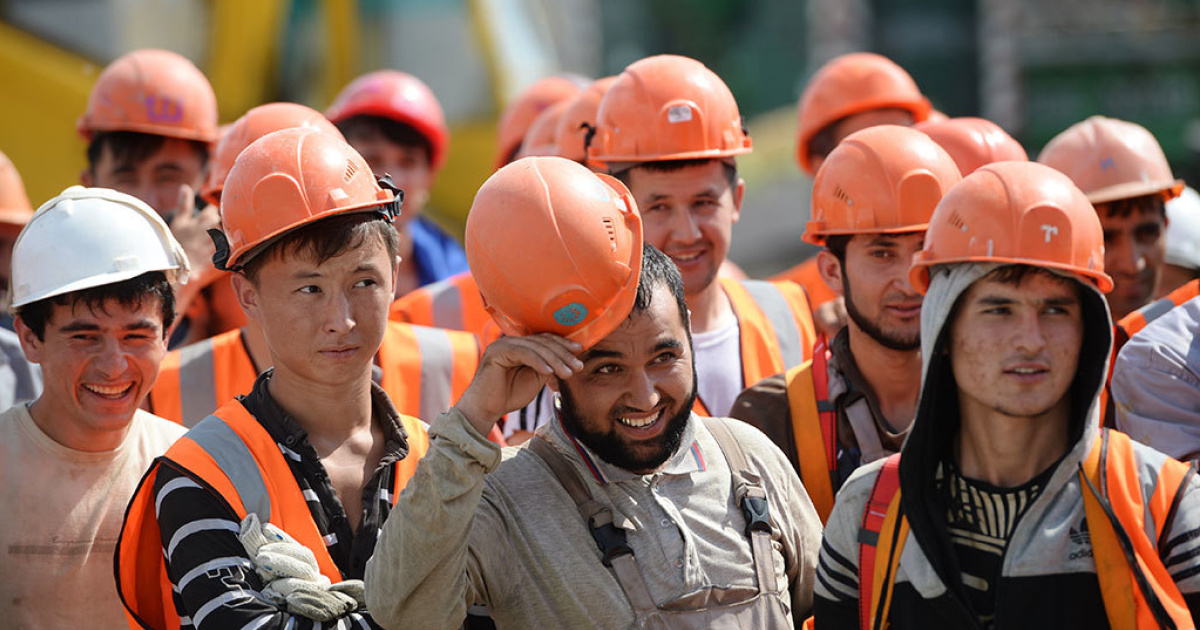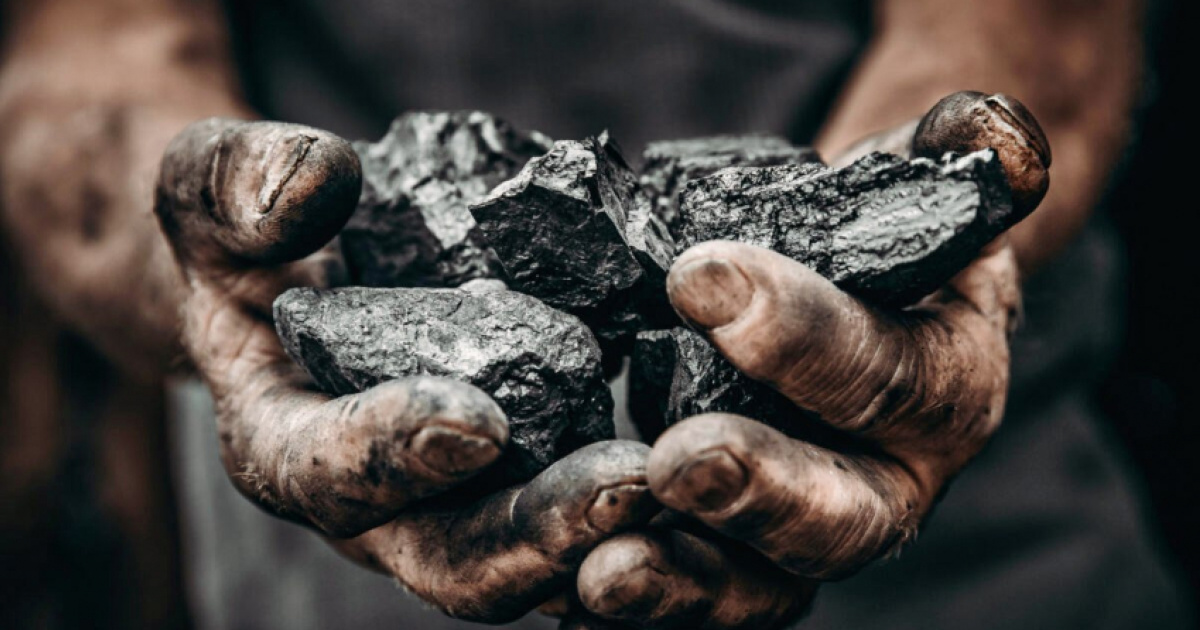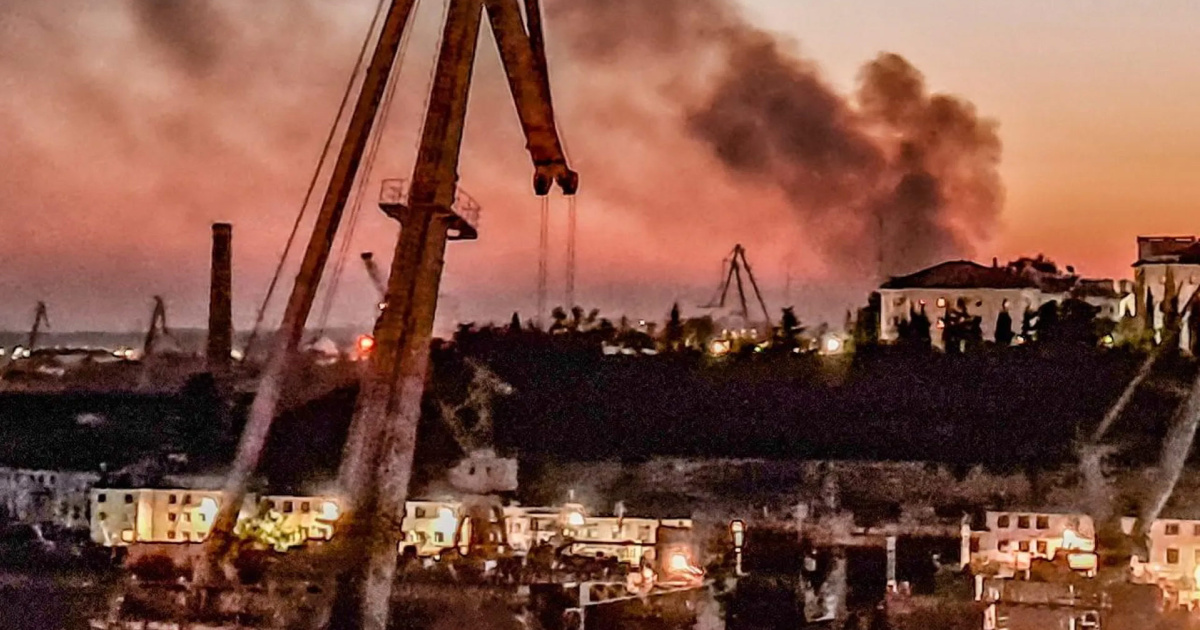
The hype surrounding the updated Law of Ukraine on Mobilization have sparked intense debates among the domestic elite and confusion within Ukrainian society. It is evident that the success of mobilization will depend not so much on organizational as on motivational factors. In this context, it is worth referring to both the positive and negative experiences of the past, particularly the events of the Ukrainian National Revolution from 1917 to 1921, during which our state and citizens endured a prolonged and complex social and interstate conflict.
The army of the Central Rada: "a general without an army"
The foundations of the Ukrainian People's Army were laid in 1917 after the fall of the russian monarchy, amid the rapid growth of the national liberation movement in Ukraine and the ongoing World War I.
After the formation of the Ukrainian People's Republic (UPR), the General Secretariat subordinated the army command structures located within the territory of Ukraine to itself from the russian army. The Southwestern and Romanian fronts were merged into a single Ukrainian one. It was during this time that the semi-legitimate military construction of the Ukrainian army began.
In November, the General Staff was created, and the General Secretariat for Military Affairs was included in the UPR government, performing the functions of the Ministry of Defense. Ukrainian military educational institutions were also established at that time to train young officers. In December, the first purely Ukrainian (not Ukrainized) regular units were formed.
In accordance with the authority of the Military Minister, S. Petliura approved the statute of the Ukrainian People's Army on December 30, 1917. The statute stated that it was the duty of every citizen of the UPR to defend their homeland, the lives, and the well-being of its inhabitants from enemy attacks.
In accordance with the Law "On the Formation of the Ukrainian People's Army" adopted by the Central Rada on January 3, 1918, it was created to defend the homeland from external aggression. Units of the former russian army, barely holding the front against Austro-German forces, were to be demobilized. Thus, under the Central Rada's decree, the regular army was completely abolished.
The Central Rada adopted a territorial militia principle for the recruitment of its own troops. Mobilization was declared only in the event of war for the purpose of defending the state. It was envisaged to distribute instructors across three districts - Kyiv, Kharkiv, and Odesa. At the same time, instead of an army, the numerous composition of which was based on universal military service, an attempt was made to create a professional volunteer army. However, this did not correspond to the realities of the time.
Due to the inconsistent military policy of the Central Rada and its mistrust of former officers of the russian army, Ukrainianized units began to demobilize spontaneously at the end of 1917. One of the reasons was the desire of yesterday's peasants, who made up the majority of the troops, to return to peaceful labor, participate in the division of land declared by the Third Universal, which, among other things, implied Ukraine's exit from the World War I. Such a futile policy of militarization and simultaneous demilitarization made the UPR almost defenseless.
As is known, Bolshevik russia began aggression against the UPR in late 1917. Faced with the threat of losing statehood, the Central Rada adopted a temporary "Law on the Formation of the Ukrainian People's Army", which provided for the recruitment of instructors, that is, military specialists who organized the training of conscripts for military service. Despite the good but untimely idea of forming a combat-ready army, the Central Rada simply did not have time to implement this plan. After all, the Bolshevik advance was swift and decisive.
Ultimately, in the face of the full-scale invasion of the large Bolshevik detachment led by M. Muraviov, which advanced on Kyiv in January 1918, there was almost no one to defend the Central Rada.
As a result, the Central Rada lost control over most of Ukraine. Regaining power with the help of Austro-German forces in the spring of 1918, the UPR resumed the process of developing the army based on a modified military concept. According to the revised plan formulated in April, the organization of a regular army was to be based on territorial recruitment.
Structurally, the Ukrainian army was to consist of several infantry corps and 4-5 cavalry divisions. Already in April 1918, the UPR Army numbered 40,000 infantry, 1,500 cavalry, and 20,000 garrison personnel, totaling 56,000 personnel. The formation of eight territorial infantry corps and a separate division for Tavria began. However, its further development was interrupted by the April coup d'état of 1918, which resulted in the establishment of the regime of Hetman Pavlo Skoropadsky in Ukraine.
Thus, the international pacifism declared by the Central Rada, the unresolved social issues, particularly the agrarian question, the general fatigue from the World War I, and the absence of a clear plan for decisive and measured steps, all diminished the motivation of the people who found themselves unable to defend the gains of the Ukrainian revolution. Therefore, the Central Rada failed the military exam and lost to the Bolsheviks, and eventually to the Austro-German occupying authorities.
The army of the West Ukrainian People's Republic: "We will sacrifice body and soul for our freedom"
The Ukrainian Galician Army (UGA) is considered the successor of the Ukrainian Sich Riflemen Legion and detachments of the Austro-Hungarian army formed from Galician Ukrainians who, from November 1, 1918, were subordinated to the Ukrainian National Council.
It should be noted that the ruling circles of the West Ukrainian People's Republic took a more responsible approach to the issue of military construction. After all, a significant factor hindering the development of the state in Western Ukraine was the Poles, who declared the revival of the Second Polish Republic two days before the West Ukrainian People's Republic. This led to the beginning of the Polish-Ukrainian War of 1918-1919. On the same day that the West Ukrainian People's Republic emerged, the Ukrainian National Council issued a law on universal military service for citizens of the republic.
According to the law, the State Secretariat of Military Affairs announced general mobilization of Ukrainian men aged 18 to 35 on November 15, establishing military-territorial divisions into regions. In addition to the 3 regional and 12 district divisions, there were 60 district military commands headed by military commanders who organized the recruitment of new recruits, their training, and the replenishment of the army with new units.
At the same time, in the early days of the Polish-Ukrainian war, a system for forming the army was not developed: the newly created units had arbitrary structures and were named after their localities or the names of their commanders. The first combat groups, which became the nucleus of the Lviv Front, emerged from the Ukrainian Sich Riflemen Legion. Based on these combat groups, the backbone of the Armed Forces of the West Ukrainian People's Republic was formed: 3 corps, each with 4 brigades.
The leaders of the West Ukrainian People's Republic, primarily military leaders, urgently sought an ally in the struggle for independence. Their call was first answered by P. Skoropadsky, and later by the Directorate of the Ukrainian People's Republic, providing financial, personnel, and armed support to the armed forces of the newly formed Ukrainian state.
However, despite the assistance, the Ukrainian Galician Army (UGA) constantly felt a shortage of officer staff. Contrary to the experience of Ukrainians who served in the Austro-Hungarian army, only a small number of them entered the command structure. Therefore, the leaders of the West Ukrainian People's Republic invited non-commissioned officers from the former imperial army, predominantly Germans, Austrians, and Czechs, to serve in the UGA.
Despite the Polish-Ukrainian confrontation, by the spring of 1919, the organization of the UGA was completed: its ranks had grown to 125,000 people, mainly due to the peasantry. The peasants of Western Ukraine had something to lose. The proclamation of the West Ukrainian People's Republic and the agrarian reform of its government contributed to a fairly equitable distribution of land. This became one of the most important motivational factors for mobilizing provincial farmers into the ranks of the UGA.
By granting equal rights to all national minorities within the West Ukrainian People's Republic, the Galicians won over representatives of other ethnic groups to their side. In particular, Jews formed their famous "Jewish Combat Unit", which fought alongside Ukrainians for some time. The inhabitants of Western Ukraine, given the chance to create an independent state, clearly realized that it needed to be defended with weapons in hand.
During the Polish-Ukrainian confrontation, the UGA gained certain experience, significantly strengthened their combat readiness, and increased their authority among the Ukrainian population. As the military formation of the West Ukrainian People's Republic, the UGA fought with varying success against the Poles, the Denikinites, and the Bolsheviks throughout 1918-1919.
However, despite a more or less systematic military buildup, the UGA failed to defeat the Polish army, reinforced by the so-called "Blue" Corps of General J. Haller, formed in France from Polish prisoners of war. The main reason for the defeat of the West Ukrainian People's Republic was that Poland had military, financial, and political support from the Entente powers. The lack of human resources and ammunition also played a role, and the will to fight proved to be insufficient. Despite losing control of their lands, the Galicians, along with the warriors of the Directorate of the Ukrainian People's Republic, continued to fight on the territory of Greater Ukraine until late autumn 1919.
The Armed Forces of the Ukrainian State: "with the support of German bayonets"
The armed forces during the Hetmanate period consisted of various military units that arose outside of a general plan for creating a Ukrainian army. Despite obstacles imposed by Austro-German command, it wasn't until July 24, 1918, that the Council of Ministers of the Ukrainian State approved a law on universal military service and adopted a plan for army reorganization. The length of service was established: 2 years in infantry, 3 years in cavalry and artillery, and 4 years in the navy.
The total strength of the army in peacetime was to be 310,000 people. This figure did not satisfy either the Germans or the Austrians, whose presence in Ukraine implied the provision of "military services" at the expense of the Ukrainian population. The total number of military formations created during the Hetmanate period was about 65,000 people. It is considered that despite its considerable size, the Hetman government also failed to create a fully-fledged regular army.
During P. Skoropadsky's relatively short period in power, only organizational forms of the Armed Forces were developed and military personnel were trained. The equipping of military units was done according to the patterns of the former tsarist army. The newly formed units hardly felt a shortage of qualified personnel, as Ukraine's territory at that time was considered "the last remnant of the russian empire". Many officers of the former tsarist army moved to Kyiv to escape the Bolsheviks, and they were attracted to serve in the power structures of the Ukrainian State.
After the dissolution of the Southwestern and Southern fronts of the World War I, many self-demobilized soldiers returned to Ukraine, so there were no problems with the number of potential conscripts. However, peasants were not eager to serve in the Armed Forces of the Ukrainian State. The reason for this was the anti-peasant policy of the government of P. Skoropadsky and the Austro-German occupation forces. Skoropadsky's agrarian reform served the interests of wealthy peasants and landowners, but not the majority of the poor.
The restoration of bourgeois property, combined with harsh German occupation rules, made the Hetman regime unpopular. Austrians and Germans, with whom Ukrainians had been at war for three years, were perceived as occupiers, and the Hetman was seen as a traitor to the interests of the Ukrainian people. Repressive measures by the Hetman, Austrian, and German troops, mass confiscations, and forced grain requisition from peasants led to the activation of the "green" movement in Ukraine and the formation of an alternative - the People's Revolutionary Army of Ukraine (PRAU).
By the beginning of autumn 1918, the Hetman's rating began to decline. The end of the World War I, his declared alliance with an abstract "democratic russia", and the activation of anti-Hetman forces led to the downfall of P. Skoropadsky's regime. Ironically, a significant part of the military units that the Hetman so carefully created during his short rule sided with the Directorate or declared neutrality.
The army of the Directorate of the Ukrainian People's Republic: "in the triangle of death"
The formation of the army of the Directorate of the Ukrainian People's Republic began in the autumn of 1918. Taking into account the bitter experience of the Central Rada, the Directorate clearly realized the need for its own Armed Forces. Already on November 24, 1918, Petliura signed the "Order of the Army of the Ukrainian People's Republic", the first paragraph of which declared the creation of republican armed forces "for the defense of the Ukrainian People's Independent Republic and the protection of the entire working people".
According to further directives, the new army was to be formed on the basis of the ideological principle, cloning the so-called firmly-national-cultural conscious Cossacks and elders "not only in appearance, but also in internal content". According to military-methodological settings, "only the Ukrainian language, Ukrainian command, Ukrainian song should sound in the Cossack ranks of the army, everything should smell only of purely national and native spirit".
The main idea for which soldiers and elders of the Ukrainian People's Republic were supposed to fight and die was "the liberation of the nation from long-term bondage". The new, essentially national Armed Forces were supposed to abandon the standards and value orientations of the autocratic army, the traditions of which (according to the reformist otamans) belonged to the past. The builders of the army of the Directorate of the Ukrainian People's Republic considered the aim of the existence of the new Ukrainian troops to be the desire "to make our Cossack a conscious Ukrainian patriot, and then everything else will fall into place".
In the text of the oath of Ukrainian troops, warriors pledged "to serve faithfully to the Almighty God and to the Ukrainian People's Republic and obediently submit to the supreme authority of the Directorate, government, and the People's Army". A peculiar paradox arose: the army was national and Ukrainian, but it was supposed to serve the authorities, not the people it was called to protect. In the process of developing the Armed Forces of the Directorate, several concepts of their composition and replenishment were considered. One of them was the principle of voluntarism, the other was the creation and training according to the model of the Red Army. Voluntarism presupposed a high level of national self-awareness.
This mainly concerned the officer corps, among which ethnic russians predominated, supporters of either the russian monarchical or republican idea. To form new Ukrainian patriotically inclined soldiers and officers, V. Vynnychenko proposed opening senior courses, to which politically conscious peasants should be attracted. S. Petliura was opposed to such steps, as he believed that the process of nurturing new staff would be time-consuming, and the Bolsheviks were already starting a new war against the Ukrainian People's Republic.
As a result of discussions considering various options, the majority of the Directorate chose the simplest path – mass mobilization. According to the law: "all citizens who have undergone military training in all branches of the armed forces and in the navy, capable of bearing arms from 20 to 35 years inclusive, and elders up to 43 years old, were immediately to join the ranks of the Ukrainian People's Republic army to defend the achievements of the revolution... to obtain land and free rights for the working people and to ensure republican order and democratic procedures in the Ukrainian People's Republic". According to the mobilization law, all citizens subject to conscription were required to "appear well-shod, dressed as far as possible in military attire with weapons, which anyone has".
Structurally, the Armed Forces of the Directorate were mainly created on the same principle as the Ukrainian army during the time of the Central Rada. However, the contradictory policy of the authorities on the issues of elections to the Labor Congress, the lack of foresight in the agrarian issue – this made potential defenders of the Ukrainian state pacifist evaders. The majority of the population saw no point in fighting for the Ukrainian People's Republic, as Soviet russia promised everything at once. If not Bolshevik, then anarchist ideas seemed more attractive, so "the guys started to scatter in different directions". The idea of a "national" principle of army building did not work out.
Such a phenomenon, Commander of the Sich Riflemen E. Konovalets called "otamanism", one of the manifestations of which was that "...the masses of mobilized, sooner or later, dispersed to their homes or went over to the side of the Bolsheviks". Such self-demobilization, involvement in various armed formations, caused chaos, manifested by: banditry, numerous assaults on Jews , etc. With considerable delay, in May 1919, the institution of state inspectors was created to maintain discipline in the army. This idea was borrowed from the Bolsheviks. State inspectors resembled the Bolshevik revolutionary tribunal but acted much more leniently.
Despite the desire to create a combat-ready army, the Directorate lacked funds, ammunition, specialists, and time. The Directorate of the Ukrainian People's Republic was even less fortunate than the Central Rada. Finding itself in the whirlwind of events of the turbulent 1919, it suffered defeat. Neither the merger of the Ukrainian People's Republic army and the Ukrainian Galician Army of the West Ukrainian People's Republic, nor temporary alliances with the "greens", nor vain hopes for assistance from the Entente, nor the Warsaw Agreement with the Poles helped.
The Bolshevik horde: "the end justifies the means"
The Bolsheviks were the main enemies and at the same time the victors of almost all the armies that fought on the territory of Ukraine in 1917-1921. By the time of the decree on the creation of the Red Army of January 15 (28), 1918, their armed forces consisted of parts of the Red Guard, which arose as early as the summer of 1917. By mid-January 1918, about 32 thousand soldiers ready to fight the "counterrevolutionary" Central Rada arrived from russia and Ukrainian fronts.
The hybrid tactics of action also deserve attention. In December 1917 – March 1918, quasi-states were proclaimed in Ukraine by the Bolsheviks – the Soviet Ukrainian People's Republic, the Donetsk-Kryvyi Rih Socialist Republic (with its capital in Kharkiv), the Odesa Soviet Republic, and the Crimean Taurida Soviet Socialist Republic. Formally, these pseudo-states were semi-independent, had their own armed formations, and acted in alliance with Soviet russia, "inviting" its army to fight against bourgeois exploiters. Throughout 1918-1920, the Bolsheviks captured Ukraine four times.
It should be noted that the ideas of russian communists (most of which were borrowed from the Socialist-Revolutionary Party) were quite attractive. Thanks to them, both russian and Ukrainian peasants, workers, self-demobilized soldiers and sailors, as well as many criminals who saw an opportunity for revenge and enrichment in the proletarian revolution, willingly joined the ranks of the Red Guards.
The very name of the armed forces of Soviet russia - the Workers' and Peasants' Red Army - formally expressed the conscious class alliance of workers and peasants, who were supposed to fight for "the happiness of the working people, against exploiters", acting as liberators.
According to the Decree on the Organization of the People's Revolutionary Socialist Army of Ukraine (PRSAU), dated January 20, 1918, Red Army soldiers received 25 rubles monthly. The instructor commander of a platoon - 40 rubles, company - 50 rubles, battalion - 75, regiment - 100, instructor commander of a division - 125 rubles, corps - 150, army - 175 rubles. The mandatory service term without rotation lasted 6 months. Material compensation in case of injury, as well as free medical service, food rations, and payments to families in case of loss of the breadwinner were also provided for. Against the backdrop of compulsory service in the ranks of the PRSAU, there existed a voluntary and ideologically induced principle of "builders of a just future".
When combined with the multi-million human resources of Soviet russia, it is evident that the mobilization capabilities of the Red Army were practically inexhaustible. This is what allowed them to not be concerned with defeats and to quickly replenish the ranks of the "red legions", often in need of "cannon fodder".
Former Imperial officers who switched to serving the Bolsheviks played a significant role in enhancing the combat capability of the Red Army. By mid-August 1920, 48,000 former Imperial officers, 10,300 administrative personnel, and 214,000 former non-commissioned officers were called up into the ranks of the Red Army. The Red Army was inherently international.
Therefore, it is not surprising that communist armed formations represented a fairly diverse social and national structure, where nobles fought alongside peasants, and russians with Latvians and even Chinese. On May 29, 1918, the All-russian Central Executive Committee adopted a resolution "On Compulsory Recruitment into the Workers' and Peasants' Army" and began compulsory conscription into the Red Army for individuals aged 18 to 40, simultaneously establishing a network of military commissariats to implement the norms of this resolution. In the summer of 1918, elective command positions in the Red Army were abolished. Officers of the old army were mobilized into the Red Army, and their families were taken hostage. By the way, quite often, members of the families of staff officers and generals were held in captivity.
Military schools were reinstated, which prepared the command staff through short-term courses; military academies resumed their work. As of December 1918, the Red Army numbered 800,000 soldiers, by the beginning of 1919 - 1,630,000, by the end of 1919 - 3 million, and by November 1, 1920, approximately 5.5 million.
Populism and demagoguery, agitation and propaganda, the "red terror", the slogan "rob the robbers", combined with the idea of universal equality and building a bright future, contributed to the expansion of the Bolsheviks' popularity in Ukraine. By declaring the transfer of land to peasants, factories to workers, and the cessation of war, the russian Bolsheviks gained unprecedented support among the broad masses of the people. At the same time, their policy was more calculated and balanced. Credit must be given to the Bolshevik leaders, who (in the struggle for power) were talented tacticians and strategists, ruthless and pragmatic.
The battle for Ukraine was largely won thanks to the Bolsheviks' victory on ideological and informational fronts. This, together with the mobilization capabilities of the Red Army, the unmatched cruelty of the enemy, and the ability to achieve victory despite setbacks and without regard for losses, ensured success. Ultimately, this led to the defeat of the Ukrainian national revolution and the loss of statehood by the Ukrainians. Victory in this bloody "meat grinder" of civil war was achieved by the Bolsheviks, who proved to be more ruthless and uncompromising.
In conclusion, it should be noted that, despite existing mobilization-military traditions, the Bolshevik system of recruitment, training, and army restoration proved to be the most effective. After all, it was the Red Army that emerged victorious in the civil war on the territory of the former russian empire. A flexible, balanced, and sometimes more pragmatic and cruel policy contributed to attracting a greater number of recruits into the ranks of the armed forces of the Red Army.
The Bolshevik army, despite defeats and losses, managed to develop a significantly high-quality and effective organizational motivation among the population. Taking into account the military traditions of the Red Army, the modern russian army uses the same motivational narratives.
The struggle for "liberating Ukraine from Nazis", "protecting the russian-speaking population", the special "messianic role of the russian army" in confrontation with "global evil" and the destruction of "Ukrainian fascism" are the factors that, combined with modern propaganda, can mesmerize hundreds of thousands of new recruits for "putin's crusaders".
Therefore, for the success of mobilization processes, Ukrainians must take into account the meta-historical and motivational-ideological factors of the aggressor country's army, developing their own patriotic antidote. Ideas drive people. Wars are won in ideology. If one fails to understand this, fails to consider the interests of all social and national groups in the Ukrainian population, and fails to create appropriate motivation, no law will solve current problems.
Oleksandr Saltan, PhD in History, Kharkiv
